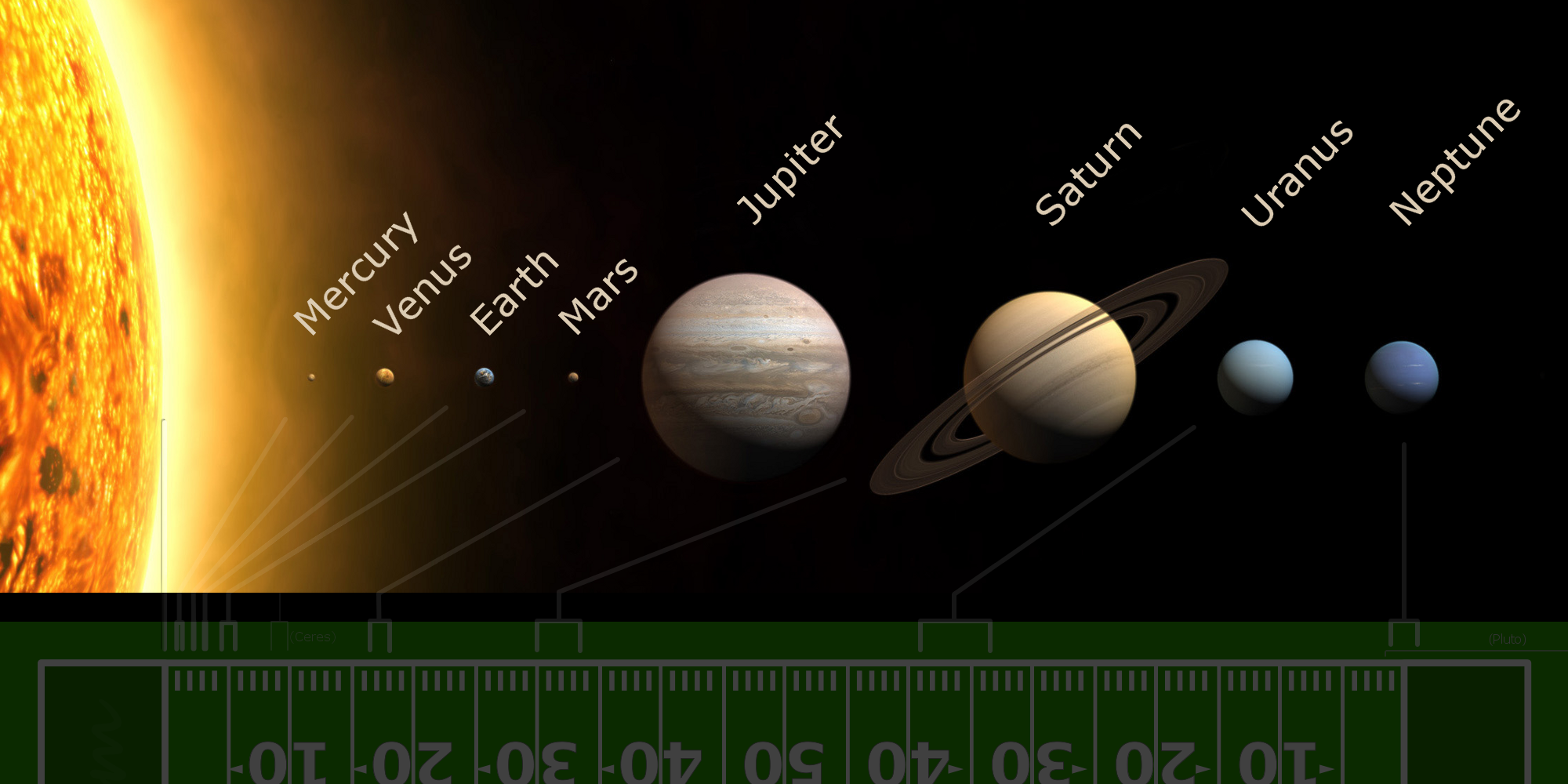The solar system comprises of nine planets since the discovery of Pluto in 1930. Most of that changed in the late 1990s, when scientists started disputing whether Pluto was a planet or not. In 2006, the International Astronomical Union made the very contentious decision to label Pluto as a “dwarf planet,” decreasing the number of genuine planets in the solar system to only eight.
After mathematical evidence of its existence was published on Jan 20, 2016, astronomers are still looking for another probable planet in our solar system, an actual ninth planet. The mass of the mythical “Planet Nine,” also known as “Planet X,” is estimated to be ten times that of Earth and 5,000 times that of Pluto.
In Solar System, there are eight planets that orbit the sun. Mercury, Venus, Earth, Mars, Jupiter, Saturn, Uranus, and Neptune are in order of distance from the sun. Pluto, once thought to be the furthest planet, is now categorized as a dwarf planet. Dwarf planets further from the Sun than Pluto have been discovered. Some asteroids are dwarf planets as well.
The Planets in Order of Distance
The most popular method of arranging the planets is according to their distance from the sun. The planets are listed in the following order using this method:
Mercury – 0.39 AU from the sun
Venus – 0.72 AU
Earth – 1.00 AU
Mars – 1.52 AU
Jupiter – 5.20 AU
Saturn – 9.54 AU
Uranus – 19.20 AU
Neptune – 30.06 AU
Because their surfaces are rocky, the inner four planets closest to the sun — Mercury, Venus, Earth, and Mars — are referred to as “terrestrial planets.” Pluto has a rocky, albeit frozen, surface, but it has never been classified as one of the four terrestrial planets.
Because of their massive size compared to the terrestrial planets, the four massive outer worlds — Jupiter, Saturn, Uranus, and Neptune — are frequently referred to as the Jovian or “Jupiter-like” planets. They’re also made mostly of gases like hydrogen, helium, and ammonia, rather than stony surfaces, according to astronomers, though some or all of them may have solid cores.
Jupiter and Saturn are known as gas giants, whereas Uranus and Neptune, further away, are known as ice giants. According to the Planetary Society, Uranus and Neptune have more atmospheric water and other ice-forming compounds, such as methane, hydrogen sulfide, and phosphene, solidifying into clouds in freezing planet environments. According to the US National Library of Medicine, methane crystallizes around 296 degrees Fahrenheit (below 183 degrees Celsius).
Pluto’s orbit is sufficiently elliptical that it can get closer to the Sun and Earth than Neptune. Mercury has the most craters of any planet in the solar system, more than any other planet. Some believe that Saturn and Jupiter were close enough to cause the Great Flood on Earth once upon a time. Saturn’s rings vanish from view for 15 years every 15 years due to their tilt. Saturn emits the spookiest radio waves of any planet in the solar system. When it comes to robots, Mars is the second most inhabited planet.
Could we fit them all on Earth?
Could you fit all eight planets into a scale model of Earth? Sure, but it would be pretty tight. Jupiter alone has a diameter of 11.2 times that of Earth; getting everything else to squeeze on would make for one overcrowded home planet. If we really want to try it out, though, we’d need to start with Pluto and squeeze each planet closer together as we go down from there (probably without even trying).
Where are they located in relation to Earth?
The planets in our solar system orbit around a center point, which is our sun. Earth is located about 93 million miles from that point, taking about a year to complete an orbit. Mercury, Venus and Mars are closer to that center point than we are; Jupiter and Saturn are farther away. They all take longer than a year to make one trip around our sun. Mercury completes its journey in 88 days; Venus takes 225 days; Mars needs 687 days; Jupiter orbits once every 11 years on average; and Saturn takes 29 years. Pluto takes 248 years for one lap around our sun—and it’s not even officially considered a planet anymore!
![]()
